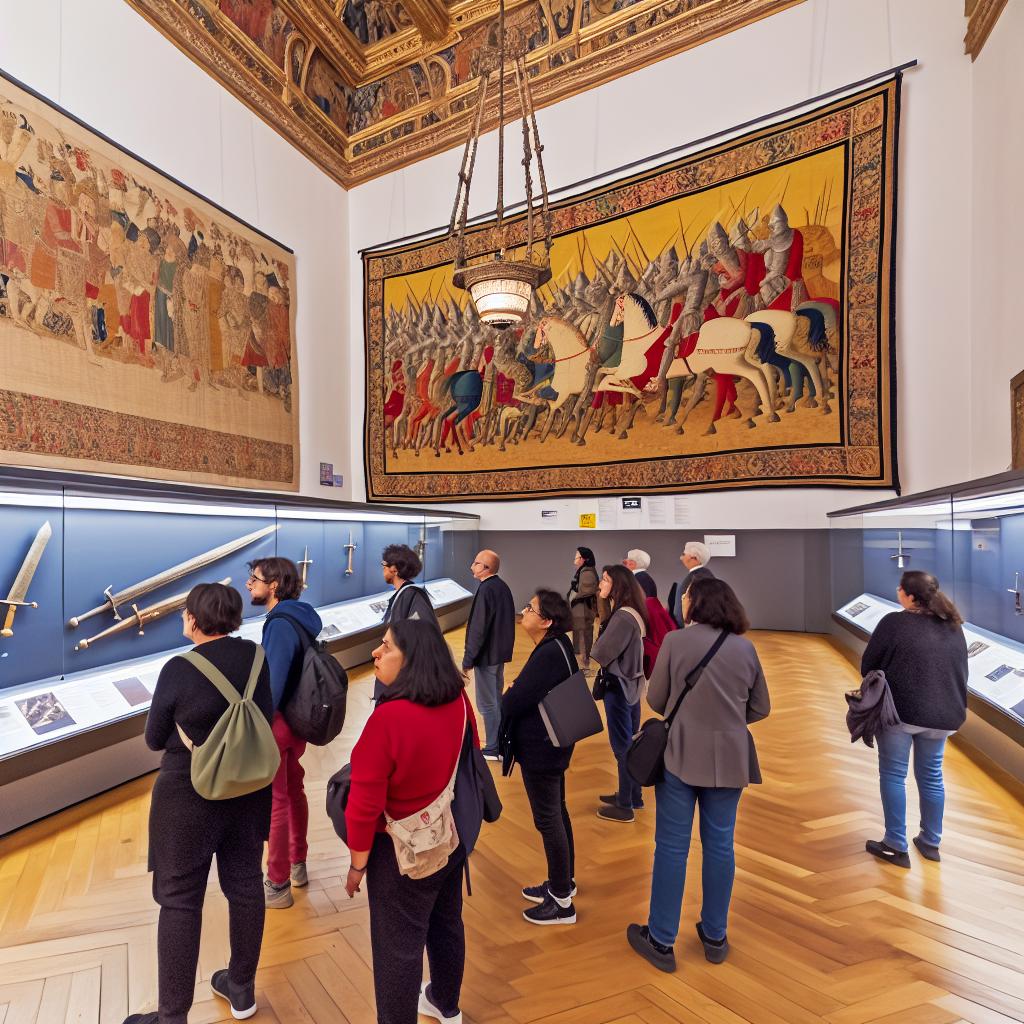Introduction to European Museums and Medieval Art
European museums play a critical role in preserving and showcasing the medieval art and history of the continent. This period, roughly from the 5th to the late 15th century, is richly represented in numerous institutions. These museums provide an immersive journey into the past, offering insights into the artistic techniques, historical events, and cultural practices that defined the era.
The Importance of Museums in Preserving Medieval Heritage
Museums in Europe are paramount in safeguarding medieval artifacts and artwork. They ensure that these treasures are not only preserved for future generations but also made accessible to the public. Through exhibits, educational programs, and publications, museums keep alive the stories and artistry of the medieval period. This preservation effort is essential for understanding the roots of modern European culture.
Museums serve as custodians of cultural heritage, continuously working to maintain the physical and historical integrity of artifacts. Artifacts such as intricate tapestries, fragile manuscripts, and weathered sculptures all require specialized care. By housing these items in controlled environments, museums protect them from environmental threats like humidity or pollution. This stewardship is not just of national interest but of global significance, appreciating the interconnected history of human civilization. Furthermore, museum archives are treasure troves for researchers, offering opportunities for scholarly study and interpretation, which can lead to new understandings of historical narratives.
Exhibition Techniques and Display Strategies
European museums employ various exhibition techniques to showcase medieval art effectively. Artifacts are often displayed in thematic sections that offer comprehensive narratives. This strategic grouping may include themes like daily medieval life, religious influence in art, or technological advancements of the period. By compartmentalizing exhibits, museums present a story-like walkthrough of history that guides visitors chronologically or through specific cultural lenses.
For instance, exhibits organized by geographic regions can highlight local artistic tendencies and historical influences. Similarly, displaying artifacts by type, such as unique metalworks or rare manuscripts adorned with detailed illuminations, helps emphasize the specialized craftsmanship of the era. These structured exhibitions invite visitors to appreciate the wide-ranging influences and the shared heritage represented in medieval art, fostering a deeper understanding of the past’s complexity and interconnectedness.
Interactive and Multimedia Features
To enhance the visitor experience, many museums integrate interactive and multimedia features into their exhibits. Digital displays, audio guides, and virtual reality (VR) experiences are increasingly common. These tools allow visitors to explore medieval history and art in engaging and informative ways.
Interactive exhibits often feature touchscreens that provide additional information about specific pieces, which can include detailed annotations or high-resolution images showing closer views of miniature details in artworks. VR experiences offer a simulated immersion into the medieval world, transporting visitors to a lively medieval marketplace or an event of historical significance. This technology fosters an experiential comprehension of history, making learning both fun and educational, especially engaging for younger audiences who benefit from dynamic and visual learning methods.
Key Museums Featuring Medieval Collections
The British Museum, London
The British Museum offers a vast collection of medieval artifacts from across Europe. The museum’s exhibits include unique items such as the Sutton Hoo treasures and the Lewis Chessmen. More information can be explored through their official website. The extent of the British Museum’s collection allows visitors to explore a range of artifacts that tell the story of medieval Britain in rich detail. Manuscripts, coins, arms, and armory paint a vivid picture of life and politics during this era, inviting reflection on the progression of societies.
The Louvre, Paris
The Louvre houses an impressive array of medieval artifacts, including religious sculptures and illuminated manuscripts. The museum’s medieval section provides a glimpse into the art of the Middle Ages, highlighting works from both the Gothic and Romanesque periods. The Louvre’s website offers further details about its collections. The artistry on display bridges the transition from Romanesque solidity to Gothic intricacy, evidence of the dynamic evolution of European art under the influences of prevailing religious and cultural changes.
Rijksmuseum, Amsterdam
The Rijksmuseum in Amsterdam is another key institution with a significant medieval collection. Known for its Dutch medieval art, the museum showcases paintings, textiles, and sculptures. The museum creatively combines educational angles with its displays, which can be further explored on their website. Here, the celebrated pieces illuminate the intersection of art and quotidian life in medieval society, centered around the Netherlands’ rich history and traditions.
Beyond Displays: Educational Programs and Workshops
Many European museums offer educational programs and workshops that delve deeper into the medieval era. These programs are designed for a range of audiences, from school groups to adult learners. Workshops may include hands-on activities like medieval manuscript creation or armor forging, providing participants with a unique connection to the past. Such initiatives often include lectures and seminars led by historians and experts, ensuring that attendees gain a nuanced and informed understanding of medieval history.
These educational efforts extend the reach of the museum’s influence beyond the immediate realm of displayed artifacts, serving as an incubator for cultivating knowledge and appreciation of medieval heritage. Tailored programs encourage lifelong learning, fostering an appreciation that transcends the museum visit and inspires ongoing interest and preservation of cultural heritage.
Conclusion
European museums are vital in presenting and preserving the art and history of the medieval period. Through carefully curated exhibits and innovative engagement strategies, these institutions offer a rich educational experience to the public. By understanding the medieval period through these museum exhibitions, visitors gain valuable insights into European cultural heritage that continues to influence modern society.
In conclusion, the role of museums is not confined to preservation alone but extends to education and cultural enrichment, acting as a bridge connecting the past with the future. As stewards of knowledge, museums ensure that the narratives they curate remain relevant, informing our understanding of societal evolution and cultural roots. Their contributions help shape a world that appreciates the foundations laid by medieval societies, guiding the trajectory of contemporary culture and thought.

